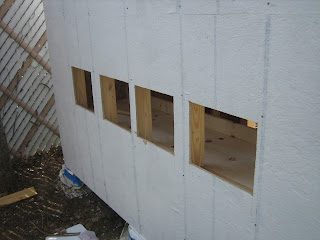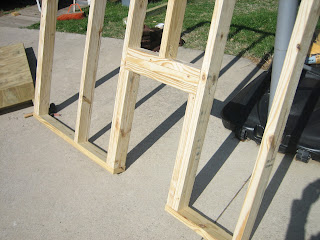Here are views of the finished chicken coop. I am very pleased that it looks great, and works perfectly, is easy to clean and the chickens love it and use it as planned.
 |
| Usually the coop is left like this, with the big door closed, and the chicken door open so they can enter and leave to lay eggs when they want. |
 |
| The final decorated nesting box doors. It is easy to just open them and check for eggs. |


















































